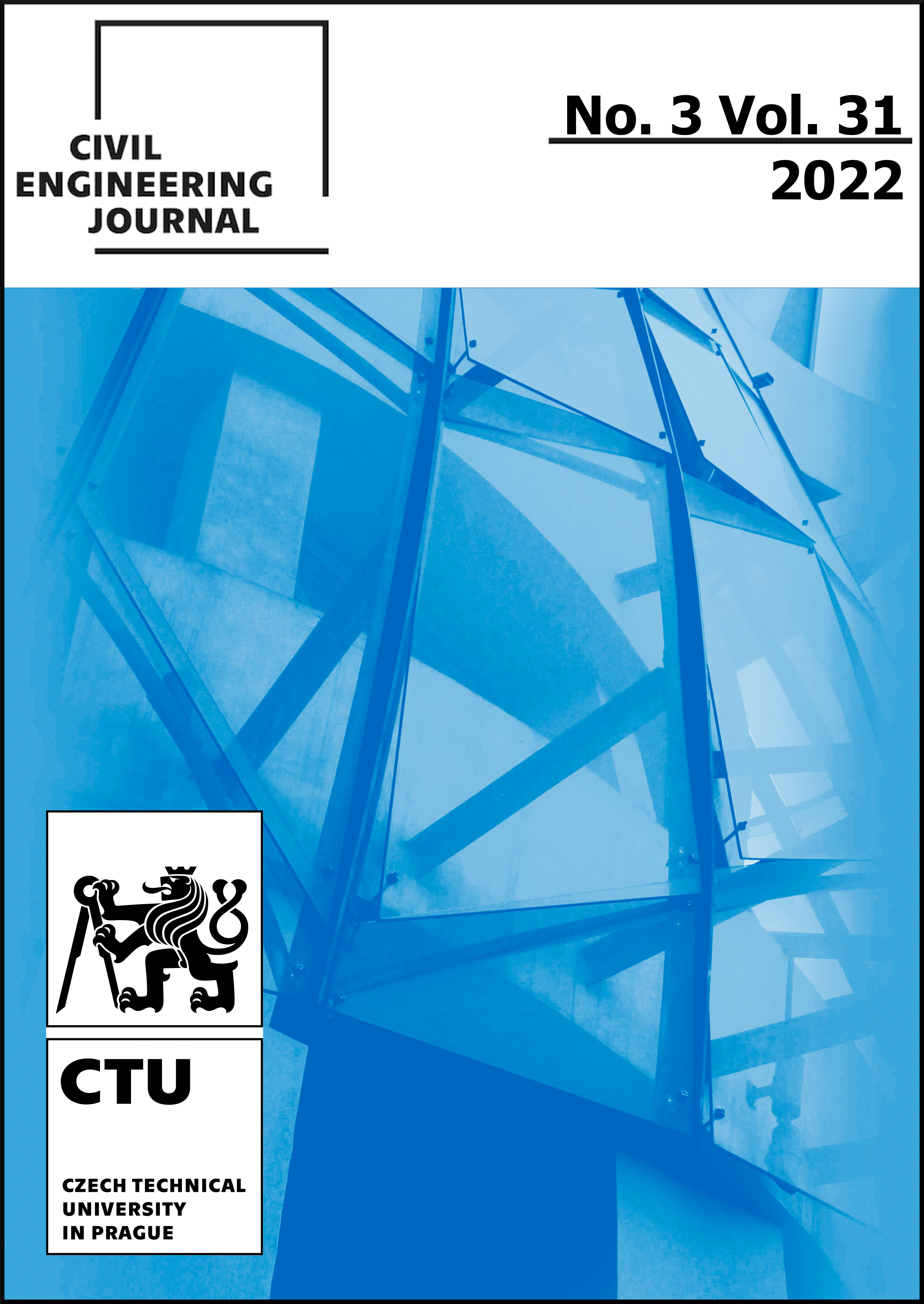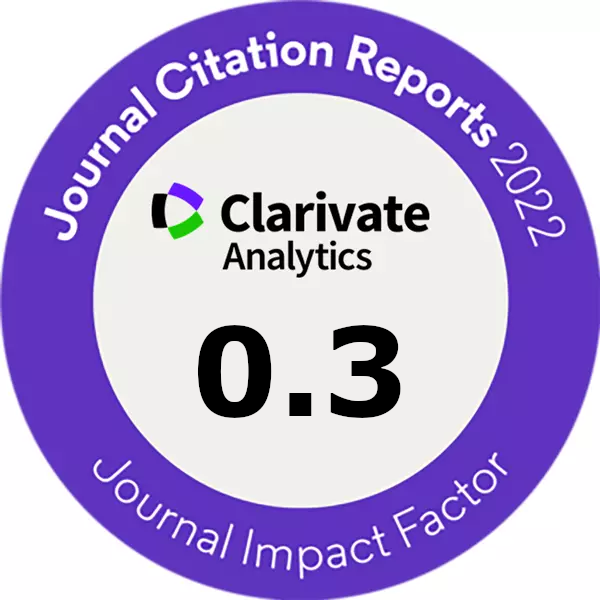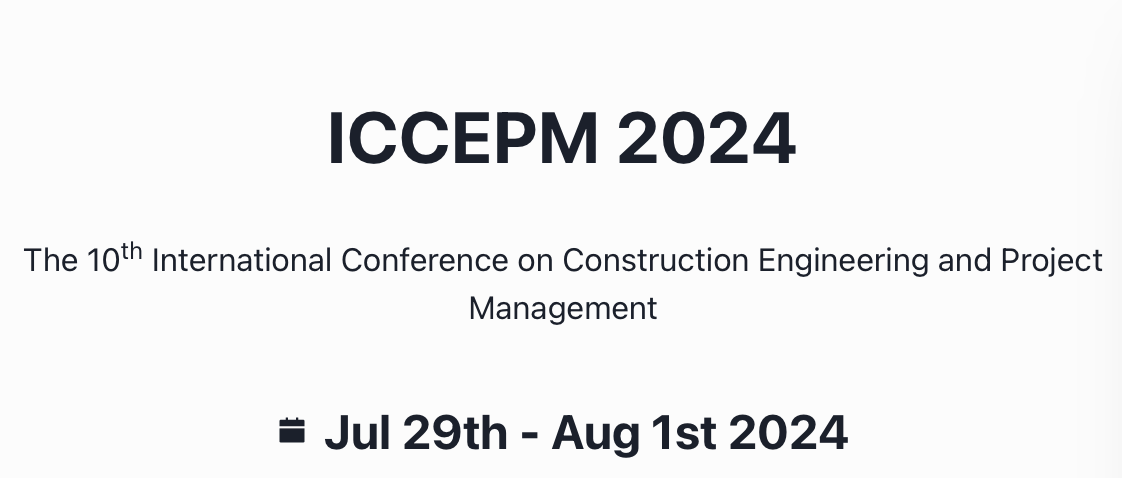SEISMIC VULNERABILITY ANALYSIS OF CABLE-STAYED BRIDGE DURING ROTATION CONSTRUCTION
DOI:
https://doi.org/10.14311/CEJ.2022.03.0029Keywords:
Bridge engineering, Rotational cable-stayed bridge, Earthquake, Vulnerability analysis, System damageAbstract
Due to the swivel construction, the structural redundancy of cable-stayed bridge is reduced, and its seismic vulnerability is significantly higher than that of non-swirling construction structure and its own state of formation. Therefore, it is particularly important to study the damage changes of each component and stage system during the swivel construction of cable-stayed bridge under different horizontal earthquakes. Based on the construction of Rotary Cable-stayed Bridge in Haxi Street, the calculation formula of damage exceeding probability is established based on reliability theory, and the damage calibration of cable-stayed bridge components is carried out, and the finite element model of cable-stayed bridge rotating structure is established. The vulnerable parts of the main tower and the stay cable components of the cable-stayed bridge are identified and the incremental dynamic analysis is carried out. Finally, the seismic vulnerability curves of the main tower section, the stay cable and the rotating system are established. The results of the study show that the vulnerable areas of the H-shaped bridge towers are the abrupt changes in the main tower section near the upper and lower beams, and the vulnerable diagonal cables are the long cables anchored to the beam ends and the short cables near the main tower;At the same seismic level, the damage exceedance probability of main tower vulnerable section of cable-stayed bridge under transverse earthquake is greater than that under longitudinal earthquake, the damage exceedance probability of vulnerable stay cables under transverse seismic action is less than that under longitudinal seismic action;On the premise of the same damage probability, the required ground motion intensity of the system can be reduced by 0.35g at most compared with the component;Under the same seismic intensity, the system damage probability is 6.60 % higher than the component damage probability at most. The research results have reference significance for the construction of rotating cable-stayed bridges in areas lacking seismic records.
Downloads
References
Hu Zhaotong, Liu Jianxin, 1997. Construction characteristics of Mingshi Strait Bridge. Foreign highway, vol. 1997(06):20-23. doi:CNKI:SUN:GWGL.0.1997-06-005.
Wang Shengbin, 2003. Response analysis of cable-stayed bridge under earthquake action. Papers of the 12th National Conference on Structural Engineering, Addendum of Engineering Mechanics, vol. 2003:105–111.
Zhang Yun, Zhou Xiaorong, Huang Jiadong, 2020. The theory and practice of seismic vulnerability analysis of bridge structures. Beijing:Science Press.
Wu Shaofeng, Shangguan Ping, 2010. Vulnerability Analysis of Single Tower Partial Cable-stayed Bridge under Transverse Ground Motion. Earthquake Engineering and Engineering Vibration, vol. 2010,30(2):142-149. doi: 10.13197/j.eeev.2010.02.009.
Feng Qinghai, 2011. Preliminary seismic vulnerability distribution trend of extra-long-span cable-stayed bridge. Highway, vol. 2011 (03):46-49. doi:CNKI:SUN:GLGL.0.2011-03-012.
Gu Yin, Zhong Hua, Zhuo Weidong, 2012. Seismic vulnerability analysis of low-pylon cable-stayed bridge structure based on performance. Journal of Civil Engineering, vol. 2012,45(S1):218-222. doi:10.15951/j.tmgcxb.2012.s1.012.
Shen Guoyu, Yuan Wancheng, Pang Yutao, 2013. Analysis of composite seismic vulnerability of cable-stayed bridges. Journal of Tongji University ( Natural Science Edition ), vol. 2013,41(7):970-976. doi: CNKI:SUN:TJDZ.0.2013-07-003.
Huang Shengnan, Yang Desheng, Song Bo, et al, 2014. Seismic vulnerability analysis of long-span cable-stayed bridges. Engineering mechanics, vol. 2014,31(S1):86-90. doi:CNKI:SUN:GCLX.0.2014-S1-017.
Xu Lifeng, 2015. Study on seismic vulnerability of cable-stayed model bridge. Southwest Jiaotong University.
Zhou Teng, 2016. Study on the influence of supporting system on seismic vulnerability of long-span cable-stayed bridges. Southwest Jiaotong University.
Ji Zhengdi, 2016. Seismic vulnerability analysis of concrete cable-stayed bridges based on performance. Chang ' an University.
Wang Chongchong, 2017. Seismic vulnerability and risk analysis of long-span highway-railway cable-stayed bridge. Southwest Jiaotong University.
Chen Yindeng, 2018. Seismic vulnerability of long-span railway cable-stayed bridge system based on OpenSees software. Southwest Jiaotong University.
Gu Qiong, 2019. Research on probabilistic seismic damage characteristics of offshore cable-stayed bridges considering environmental corrosion. Beijing Jiaotong University.
Fabio Casciati, Gian Paolo Cimellaro, Marco Domaneschi, 2008. Seismic reliability of a cable-stayed bridge retrofitted with hysteretic devices. Computers & Structures, vol. 86(17-18):1769-1781. doi:10.1016/j.compstruc.2008.01.012
Chao Li, Hong-Nan Li, Hong Hao, et al, 2018. Seismic fragility analyses of sea-crossing cable-stayed bridges subjected to multi-support ground motions on offshore sites. Engineering Structures, vol. 2018,165(15):441-456. doi:10.1016/j.engstruct.2018.03.066.
Junjun Guo, Shahria Alam, Jingquan Wang, et al, 2020. Optimal intensity measures for probabilistic seismic demand models of a cable-stayed bridge based on generalized linear regression models. Soil Dynamics and Earthquake Engineering, vol. 2020,131:106024. doi:10.1016/j.soildyn.2019.106024.
H.Hwang, Liu Jingbo, 2004. Vulnerability analysis of reinforced concrete bridge structure under earthquake. Journal of Civil Engineering, vol. 2004,37(6):47-51. doi: CNKI:SUN:TMGC.0.2004-06-008.
Wang Xuewei, 2017. The failure mode, seismic vulnerability and risk assessment of highway-railway cable-stayed bridge under earthquake. Southwest Jiaotong University.
Pang Yutao, Wang Jianguo, Ouyang Hui, et al, 2018. Seismic vulnerability analysis of continuous steel bridge with steel fiber reinforced concrete. Journal of Harbin Engineering University, vol. 2018,39(04):687-694.
Ji Quanyou, 2019. Seismic vulnerability and seismic resilience analysis of long-span suspension bridges. Chang 'an University.
Meng Yuanying, 2019. Seismic vulnerability and risk analysis of high-pier long-span continuous rigid frame bridge based on performance. Chang ’ an University.
Yang Kai, 2019. Seismic vulnerability and risk analysis of V-leg continuous girder bridges considering performance degradation. Chang 'an University.
Gao Neng, 2017. Seismic vulnerability analysis of long-span continuous girder bridges. Southwest Jiaotong University.
Xiao Keli, 2019. Seismic vulnerability analysis and structural optimization of single-tower cable-stayed bridges. Southwest Jiaotong University.
Huang Zhitang, 2015. Probabilistic seismic vulnerability and risk analysis of composite column high pier long-span continuous rigid frame bridge. Southwest Jiaotong University.
Wang Jingquan, Li Shuai, Zhang Fan, 2017. Vulnerability analysis of near-fault long-span cable-stayed bridges with SMA intelligent rubber bearings. China Journal of Highways, vol. 2017,30(12):30-39. doi:10.19721/j.cnki.1001-7372.2017.12.004.
Fan Lichu, Zhuo Weidong, 2001. Bridge ductility seismic design. Beijing : People's Transportation Press.
Downloads
Published
How to Cite
Issue
Section
License
Copyright (c) 2022 Stavební obzor - Civil Engineering Journal

This work is licensed under a Creative Commons Attribution-NonCommercial 4.0 International License.
Authors who publish with this journal agree to the following terms:
- Authors retain copyright and grant the journal right of first publication with the work simultaneously licensed under a Creative Commons Attribution License that allows others to share the work with an acknowledgement of the work's authorship and initial publication in this journal.
- Authors are able to enter into separate, additional contractual arrangements for the non-exclusive distribution of the journal's published version of the work (e.g., post it to an institutional repository or publish it in a book), with an acknowledgement of its initial publication in this journal.
- Authors are permitted and encouraged to post their work online (e.g., in institutional repositories or on their website) prior to and during the submission process, as it can lead to productive exchanges, as well as earlier and greater citation of published work (See The Effect of Open Access).









 ¨
¨
